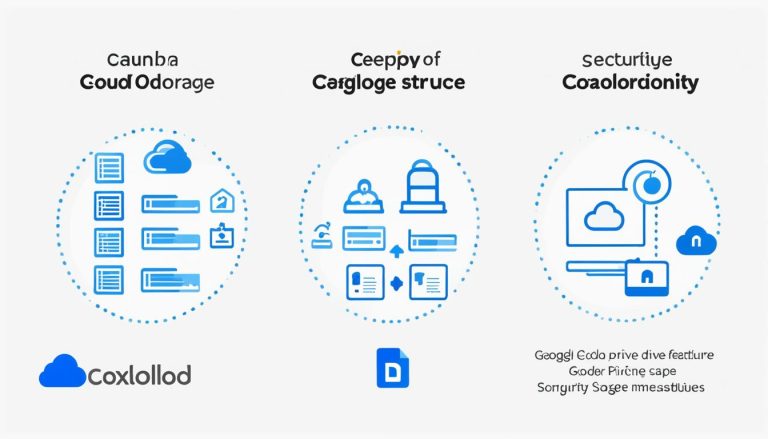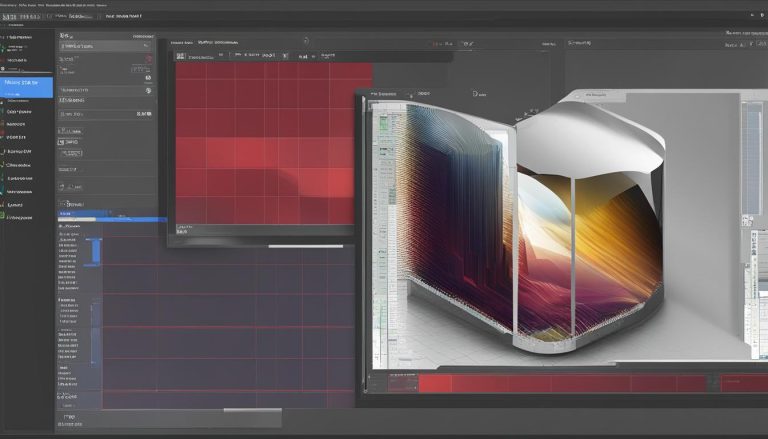Unraveling the Mystery: What is ESXi?
ESXi is a virtualization software developed by VMware. It is widely used for creating and managing virtual machines (VMs) on servers. But what exactly is ESXi? Let me explain.
ESXi, short for “Elastic Sky X Integrated,” is a bare-metal hypervisor that runs directly on server hardware. It offers exceptional performance and resource utilization, allowing multiple operating systems to run simultaneously on a single physical server. This enables greater efficiency and flexibility in IT environments. With ESXi, you can enjoy a range of features like live migration, high availability, and resource pooling, making it a powerful tool for virtualization. Whether you are a small-scale user or part of a larger organization, ESXi provides the stability, performance, and extensive hardware compatibility you need.
Key Takeaways:
- ESXi is a virtualization software developed by VMware.
- ESXi is a bare-metal hypervisor that runs directly on physical server hardware.
- ESXi allows multiple operating systems to run simultaneously on a single physical server.
- ESXi offers features such as live migration, high availability, and resource pooling.
- ESXi provides stability, performance, and extensive hardware compatibility.
ESXi Features and Benefits
ESXi, as a virtualization software developed by VMware, offers a wide range of features and benefits that make it a popular choice for businesses looking to maximize their IT infrastructure efficiency. With its lightweight design, ESXi allows for efficient resource allocation and utilization, resulting in improved overall performance.
One of the key features of ESXi is its support for live migration through vMotion. This feature enables seamless movement of virtual machines (VMs) between hosts without any disruption, ensuring high availability and minimal downtime. Additionally, ESXi offers advanced features like high availability and distributed resource scheduling, further optimizing resource utilization across multiple hosts.
ESXi’s benefits extend beyond its feature set. It provides secure isolation between VMs, protecting sensitive data and preventing unauthorized access. The software also offers encryption capabilities for virtual machine disks, ensuring the confidentiality of critical information.
“ESXi’s lightweight design allows for efficient resource allocation and utilization, resulting in improved overall performance.”
Overall, ESXi stands out among other virtualization software for its stability, performance, and extensive hardware compatibility. Its features and benefits make it an ideal choice for businesses of all sizes, offering scalability, flexibility, and enhanced management of virtual machines.
| Feature | Benefits |
|---|---|
| Live Migration (vMotion) | Seamless movement of VMs between hosts without disruption |
| High Availability | Ensures VMs are always up and running, even in the event of a host failure |
| Distributed Resource Scheduling | Optimizes resource utilization across multiple hosts |
| Secure Isolation | Protects sensitive data and prevents unauthorized access |
| Encryption | Ensures the confidentiality of virtual machine disks |
The comprehensive features and benefits of ESXi make it a powerful tool for virtualization, offering businesses improved efficiency, scalability, and security in managing their IT infrastructure.
ESXi vs Other Virtualization Software
When comparing ESXi to other virtualization software, several key differences and advantages come to light. ESXi is known for its robustness, stability, and high level of performance. It has a smaller footprint, requiring fewer system resources for operation, which can result in improved overall efficiency. Additionally, ESXi offers seamless integration with other VMware tools and technologies, providing a comprehensive virtualization solution.
Feature Comparison: ESXi vs Competitors
| Feature | ESXi | Competitor A | Competitor B |
|---|---|---|---|
| Robustness | ✓ | ✓✓ | ✓ |
| Stability | ✓✓ | ✓ | ✓✓ |
| Performance | ✓✓✓ | ✓✓✓ | ✓✓ |
| Resource Efficiency | ✓✓ | ✓ | ✓ |
| Integration with VMware Tools | ✓✓✓ | ✓ | ✓✓ |
ESXi stands out among its competitors for its robustness, stability, and exceptional performance. Its smaller footprint allows for efficient resource utilization, while seamless integration with other VMware tools provides a comprehensive virtualization solution.
Competitor A offers comparable stability and robustness, but falls short in terms of performance. Competitor B, on the other hand, excels in performance but lacks the seamless integration provided by ESXi. Ultimately, the choice between ESXi and its competitors depends on the specific needs and priorities of your virtualization environment.
Getting Started with ESXi
Are you ready to dive into the world of ESXi and harness the power of virtualization? Getting started with ESXi is easier than you might think. Let me guide you through the essential steps to help you embark on this virtualization journey.
The Hardware Requirements
Before you begin, ensure that you have compatible server hardware for ESXi. VMware provides a compatibility guide on their website that lists the supported servers and components. It’s important to choose hardware that meets the recommended specifications to ensure optimal performance and compatibility.
Installing ESXi
Once you have the right hardware, the next step is to install ESXi on your server. VMware offers a free version called ESXi Free, which is a great starting point for small-scale deployments or testing purposes. Simply download the ESXi ISO image from the VMware website and create a bootable USB or DVD. Then, follow the installation wizard to install ESXi on your server.
Configuration and Setup
After the installation is complete, you can configure and set up your ESXi environment. This involves tasks such as configuring network settings, creating virtual switches, and setting up storage. VMware provides a user-friendly web interface called the vSphere Client, which allows you to manage and configure your ESXi host and virtual machines.
Once your ESXi environment is up and running, you can start creating virtual machines, deploying applications, and exploring the endless possibilities of virtualization. Remember to regularly update your ESXi host with the latest patches and security updates to ensure the stability and security of your virtual infrastructure.
| Step | Description |
|---|---|
| 1 | Check hardware compatibility |
| 2 | Download ESXi Free ISO image from VMware website |
| 3 | Create bootable USB or DVD |
| 4 | Install ESXi on server |
| 5 | Configure network settings |
| 6 | Create virtual switches |
| 7 | Set up storage |
| 8 | Access vSphere Client to manage ESXi host and virtual machines |
| 9 | Regularly update ESXi with patches and security updates |
ESXi Licensing and Pricing
When considering ESXi for your virtualization needs, it’s important to understand the licensing options and pricing structures available. VMware offers different licensing models to cater to various requirements and budgets.
For those looking for a cost-effective solution, ESXi Free is available with limited features. This version is ideal for small-scale deployments or for those who want to explore and evaluate ESXi before committing to a paid plan. It provides a great opportunity to get started with virtualization without having to make a financial investment.
If you require more advanced features and capabilities, VMware offers paid versions of ESXi, such as ESXi Essentials and ESXi Enterprise Plus. These licenses provide access to features like vMotion, high availability, and distributed resource scheduling, allowing for better performance and scalability. Pricing for these licenses varies based on the level of support and the number of physical processors in your environment.
“ESXi Free is a good starting point for small-scale deployments, while the paid versions offer more advanced features and support.”
ESXi Licensing Comparison
| License | Features | Pricing |
|---|---|---|
| ESXi Free | Basic features | Free |
| ESXi Essentials | vMotion, high availability, data protection | Starting at $560 |
| ESXi Enterprise Plus | vSphere Replication, distributed resource scheduling | Starting at $3,495 |
Table: A comparison of ESXi licensing options and their associated features and pricing.
It’s important to carefully evaluate your needs and budget to determine the most suitable licensing model for your organization. The paid versions of ESXi provide additional features and support that can be valuable for larger deployments and mission-critical applications.
ESXi Security and Data Protection
When it comes to virtualization, security is a top concern. ESXi offers a range of robust features and capabilities to ensure the protection of your data and infrastructure. With secure isolation between virtual machines, ESXi prevents unauthorized access or interference, providing a secure environment for your critical workloads. Additionally, ESXi offers encryption capabilities for virtual machine disks, safeguarding sensitive data from unauthorized access and ensuring confidentiality.
ESXi also provides advanced security measures such as Secure Boot, which ensures that only trusted and signed code is loaded during the boot process, protecting against malware and other security threats. Furthermore, ESXi’s robust security features extend to network security, with support for virtual distributed firewalls and micro-segmentation, allowing for granular control over network traffic and reducing the attack surface.
When it comes to data protection, ESXi offers features such as snapshots and backup integration. Snapshots allow you to capture the state of a virtual machine at a specific point in time, providing a quick and easy way to revert to a previous state if needed. ESXi also integrates with various backup solutions, allowing for seamless backup and recovery of virtual machines and their associated data.
In summary, ESXi prioritizes security and data protection to ensure the safety and integrity of your virtualized environments. With comprehensive security features, including secure isolation, encryption, and network security capabilities, ESXi provides a solid foundation for running critical workloads with confidence.
ESXi Performance Optimization
Optimizing the performance of your ESXi environment is essential to ensure smooth and efficient operation. Here are some key strategies and best practices to enhance the performance of your ESXi deployment:
Proper Resource Allocation and Management
One of the critical factors in optimizing ESXi performance is effectively allocating and managing your system resources. This includes CPU, memory, and disk resources. By monitoring and adjusting resource allocation based on workload demands, you can prevent resource bottlenecks and ensure optimal performance. VMware provides various tools and features, such as CPU affinity and memory reservations, that allow you to allocate resources efficiently and tailor them to the specific needs of your virtual machines.
Network Configuration Optimization
Efficient network configuration plays a vital role in maximizing ESXi performance. It is crucial to ensure that your network infrastructure is properly designed and configured for optimal throughput and low latency. By utilizing features such as NIC teaming and load balancing, you can distribute network traffic across multiple network adapters and achieve better network performance. Additionally, implementing Quality of Service (QoS) policies can help prioritize essential network traffic and ensure that critical applications receive the necessary bandwidth.
Storage Provisioning and Optimization
Storage performance is a significant factor in the overall performance of your ESXi environment. Proper storage provisioning and optimization can significantly enhance the performance of your virtual machines. It’s important to choose storage solutions that are compatible with ESXi and provide adequate performance for your workload requirements. Utilizing features such as Storage vMotion and Storage Distributed Resource Scheduler (SDRS) can help optimize storage utilization and improve overall performance.
Monitoring and Performance Tuning
Regular monitoring and performance tuning are essential to identify and resolve performance issues in your ESXi environment. VMware provides tools like vSphere Performance Charts and VMware vRealize Operations Manager, which can help you monitor performance metrics and identify potential bottlenecks. By analyzing performance data and making necessary adjustments, such as increasing resource allocation or fine-tuning network configurations, you can optimize the performance of your ESXi deployment.
| Optimization Area | Best Practices |
|---|---|
| Resource Allocation and Management | – Monitor resource utilization and adjust allocation based on workload demands. – Utilize features like CPU affinity and memory reservations to optimize resource allocation. |
| Network Configuration Optimization | – Configure NIC teaming and load balancing to distribute network traffic. – Implement QoS policies to prioritize critical network traffic. |
| Storage Provisioning and Optimization | – Select storage solutions compatible with ESXi and sufficient performance. – Utilize features like Storage vMotion and SDRS to optimize storage utilization. |
| Monitoring and Performance Tuning | – Regularly monitor performance metrics using tools like vSphere Performance Charts. – Make necessary adjustments based on performance data to optimize performance. |
By implementing these performance optimization strategies and best practices, you can ensure that your ESXi environment delivers optimal performance and meets the demands of your virtualized workloads.

ESXi Training and Certification
If you are looking to enhance your skills and knowledge in virtualization with ESXi, VMware offers comprehensive training and certification programs. These programs can provide you with the necessary expertise to excel in managing and optimizing virtual machines.
VMware’s training courses cover a wide range of topics, including installation and configuration, management and administration, troubleshooting, and performance optimization. Through hands-on labs and expert-led instruction, you will gain practical experience in working with ESXi and its various features.
Upon completing the training, you can take advantage of VMware’s certification exams to validate your skills and showcase your expertise in virtualization with ESXi. The VMware Certified Professional – Data Center Virtualization (VCP-DCV) certification is highly regarded in the industry and can enhance your career prospects.
| Benefits of ESXi Training and Certification | Reasons to Enroll |
|---|---|
| Enhanced Skills | Gain in-depth knowledge of ESXi and its features |
| Professional Growth | Enhance your career prospects with a recognized certification |
| Industry Recognition | Validate your expertise in virtualization with ESXi |
| Hands-on Experience | Learn through practical labs and real-world scenarios |
| Networking Opportunities | Connect with professionals in the virtualization industry |
Whether you are a beginner or an experienced professional, VMware’s training and certification programs can help you stay ahead in the rapidly evolving field of virtualization. So, why wait? Take the next step in your career and enroll in an ESXi training course today.

Conclusion
In conclusion, ESXi is a versatile and powerful virtualization software developed by VMware. It allows for the efficient creation and management of virtual machines, offering a range of features and benefits.
ESXi, also known as Elastic Sky X Integrated, is a bare-metal hypervisor that runs directly on server hardware, providing excellent performance and resource utilization. With ESXi, multiple operating systems can run simultaneously on a single physical server, enhancing efficiency and flexibility in IT environments.
ESXi stands out among other virtualization software due to its robustness, stability, and high level of performance. It has a smaller footprint and supports advanced features like vMotion, high availability, and distributed resource scheduling. Additionally, ESXi seamlessly integrates with other VMware tools and technologies, providing a comprehensive virtualization solution.
In summary, ESXi is a reliable and efficient choice for virtualization, offering improved resource utilization, scalability, and high availability. Its stability, performance, and extensive hardware compatibility make it a preferred option for businesses of all sizes.
FAQ
What is ESXi?
ESXi is a virtualization software developed by VMware that allows for the creation and management of virtual machines (VMs) on servers.
What does ESXi stand for?
ESXi stands for “Elastic Sky X Integrated.”
What are the features of ESXi?
ESXi offers features such as live migration, high availability, and resource pooling, making it a powerful tool for virtualization.
How does ESXi compare to other virtualization software?
ESXi is known for its robustness, stability, and high level of performance. It has a smaller footprint and offers seamless integration with other VMware tools and technologies.
How do I get started with ESXi?
To get started with ESXi, you need compatible server hardware. VMware provides a compatibility guide on their website. Once you have the hardware, you can download and install ESXi, including the free version called ESXi Free.
What are the licensing options for ESXi?
ESXi is available in different licensing models, including a free version called ESXi Free and paid versions like ESXi Essentials and ESXi Enterprise Plus.
How does ESXi ensure security and data protection?
ESXi provides secure isolation between virtual machines and offers encryption capabilities for virtual machine disks to protect sensitive data.
How can I optimize ESXi performance?
To optimize ESXi performance, you should follow best practices for resource allocation and management, network configurations, and storage provisioning.
Are there any training and certification programs available for ESXi?
Yes, VMware offers training and certification programs, including the VMware Certified Professional – Data Center Virtualization (VCP-DCV) certification.
- About the Author
- Latest Posts
Mark is a senior content editor at Text-Center.com and has more than 20 years of experience with linux and windows operating systems. He also writes for Biteno.com






